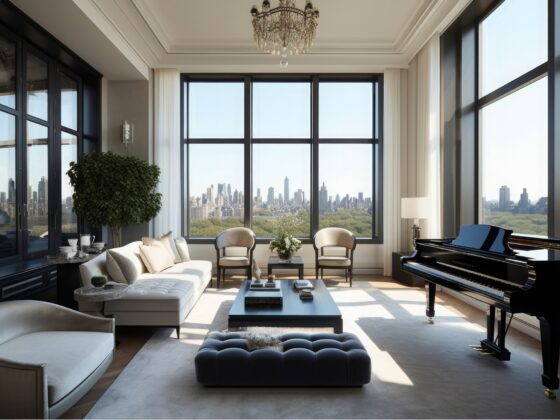Table of Contents Show
New York City, often hailed as the “Big Apple” or the “City That Never Sleeps,” is a bustling metropolis known for its iconic skyline, diverse neighborhoods, and vibrant culture. At the heart of this thriving city lies its population, a dynamic mix of individuals from various backgrounds, ethnicities, and walks of life. Let’s delve into the intricacies of New York City’s population and explore what makes it one of the world’s most diverse and captivating cities.
Size and DensitySize and Density
With a land area of approximately 305 square miles (790 square kilometers), New York City is the most populous city in the United States. As of the most recent estimates, the population of New York City surpasses 8.4 million residents. This number swells even further when considering the metropolitan area, with over 19 million people residing in the New York-Newark-Jersey City metropolitan statistical area.
Ethnic and Cultural DiversityEthnic and Cultural Diversity
New York City is renowned for its cultural melting pot, where people from virtually every corner of the globe converge. The city’s population reflects an impressive tapestry of ethnicities and cultures. It is home to a rich mosaic of communities, including but not limited to African Americans, Hispanics, Asian Americans, European Americans, and individuals of Middle Eastern descent. Over 200 languages are spoken within the city, highlighting the immense diversity present in its population.
Neighborhoods and BoroughsNeighborhoods and Boroughs
New York City, known for its pulsating energy and diverse neighborhoods, is home to a rich tapestry of individuals from various backgrounds, ethnicities, and walks of life. Let’s take a deeper dive into the population breakdown of New York City’s five boroughs—Manhattan, Brooklyn, Queens, Staten Island, and the Bronx—and explore the unique characteristics that define each of them.
ManhattanManhattan
As the heart of the city, Manhattan attracts people from all over the world. Its iconic skyline, bustling streets, and diverse neighborhoods make it a magnet for residents and tourists alike. Manhattan’s population exceeds 1.6 million, making it the most densely populated borough. Its population is a blend of professionals, artists, students, and diverse cultures. Renowned for its commerce, cultural landmarks like Times Square and Central Park, Museums, and high-end residential areas like the Upper East Side and the West Village.
BrooklynBrooklyn
With its dynamic arts scene and eclectic neighborhoods, Brooklyn has recently experienced a popularity surge. It is the most populous borough, with an estimated population of over 2.6 million. Known for its diverse communities, Brooklyn is a vibrant melting pot of cultures, attracting young professionals, families, and artists. Neighborhoods like Williamsburg, Park Slope, and Brooklyn Heights showcase the borough’s unique character, offering a blend of trendy cafes, artistic venues, and tree-lined streets.
QueensQueens
Queens, one of the world’s most ethnically diverse urban areas, is a multicultural haven with a population exceeding 2.3 million residents. This borough celebrates the cultural heritage of its inhabitants from various backgrounds. Queens is known for its vibrant food scene, international festivals, and diverse neighborhoods like Flushing, Astoria, and Jackson Heights. The borough’s thriving diversity creates a sense of inclusivity and fosters a rich cultural exchange.
Staten IslandStaten Island
Staten Island, located in the southwestern part of the city, offers a suburban feel and a close-knit community. The population is estimated to be over 476,000 residents. This borough has natural beauty, parks, waterfront areas, and a relaxed atmosphere. Staten Island attracts those seeking a quieter lifestyle while enjoying proximity to Manhattan via the Staten Island Ferry or bridges like the Verrazano-Narrows Bridge.
The BronxThe Bronx
The Bronx, known for its rich history and cultural landmarks, is home to over 1.4 million residents. It is the only borough situated primarily on the mainland of the United States. The Bronx is renowned for attractions like Yankee Stadium, the Bronx Zoo, and the Grand Concourse. With a predominantly Hispanic and African American population, the borough boasts a vibrant cultural scene, including music, art, and culinary traditions.
The population breakdown among the five boroughs of New York City showcases the city’s remarkable diversity. While Manhattan is the bustling center of commerce and culture, Brooklyn, Queens, Staten Island, and the Bronx each contribute unique characteristics. The amalgamation of cultures, ethnicities, and lifestyles within New York City’s boroughs is a testament to its unparalleled cosmopolitan spirit and ability to embrace and celebrate diversity.
Migration and ImmigrationMigration and Immigration
Migration and immigration have played a significant role in shaping the population of New York City. Throughout history, the city has been a magnet for individuals seeking opportunities and a better life. It has served as a gateway for countless immigrants arriving in the United States. Waves of immigration from Europe, Asia, the Caribbean, and Latin America have contributed to the city’s remarkable diversity. New York City remains a top destination for international migrants, further enriching its population and cultural fabric.
Economic and Social DiversityEconomic and Social Diversity
The population of New York City is as diverse economically and socially as it is ethnically. The city’s thriving economy attracts people from various professional backgrounds, including finance, technology, fashion, media, and the arts. It is a hub for innovation and entrepreneurship, offering many career growth and development opportunities. New York City has various socioeconomic backgrounds, from affluent to lower-income households. This diversity creates a unique social landscape and fosters a sense of vibrancy and inclusivity within the city.
Challenges and StrengthsChallenges and Strengths
While New York City’s population represents a vibrant tapestry, it also faces its share of challenges. Affordable housing, transportation, and access to quality education and healthcare are issues that affect different segments of the population. However, the city’s resilience and spirit of unity shine through during challenging times, as demonstrated by its response to events such as the September 11 attacks and the COVID-19 pandemic.
Final ThoughtsFinal Thoughts
New York City’s population is a vibrant mosaic of people from diverse backgrounds, cultures, and walks of life. Dynamic and multicultural is a defining characteristic that sets it apart as one of the world’s most captivating cities. Rich in history, thriving economy, and diverse communities, New York City attracts individuals seeking opportunities, cultural experiences, and a place to call home.







